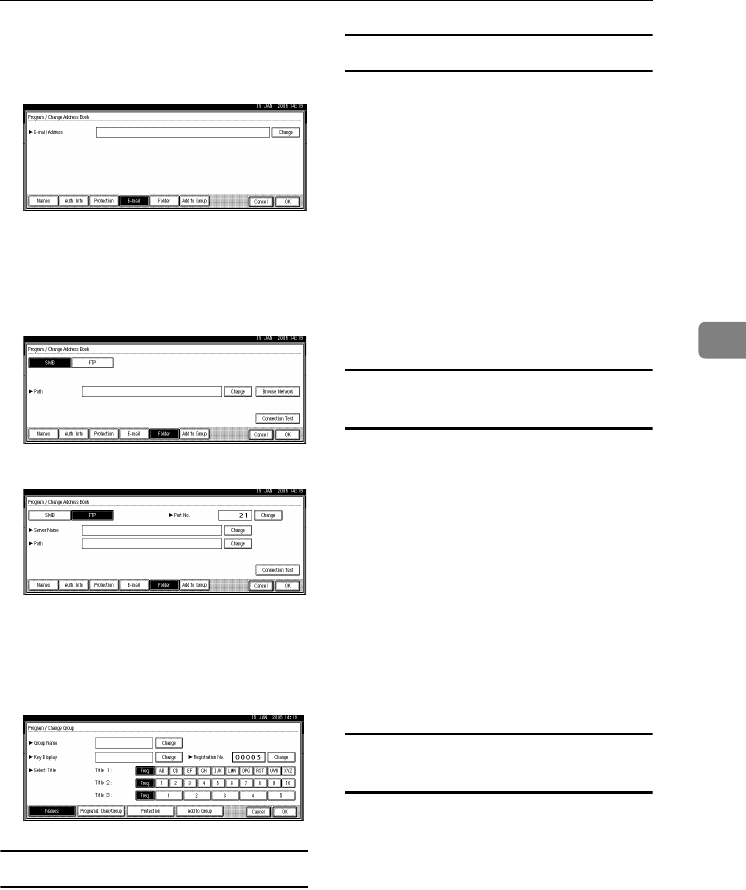
Address Book
67
4
❖
❖❖
❖ E-mail
You can register e-mail destina-
tions in the Address Book.
❖
❖❖
❖ Folder
You can register the protocol, path
name and server name.
• SMB
• FTP
❖
❖❖
❖ Add to Group
You can put registered e-mail and
folder destinations into a group for
easier management.
Managing names in the Address Book
By registering a name and key dis-
play beforehand, you can specify e-
mail and folder destinations simply
by selecting the name key.
See p.69 “Registering Names”.
Sending e-mail by Quick Dial
By registering e-mail addresses in the
Address Book, you can specify e-mail
destinations simply by selecting them
from the initial scanner display when
sending a document using the scan-
ner function.
A registered e-mail address can be
used as the sender's address, and the
sender's address are automatically
entered in the “From” field of an e-
mail header.
See p.75 “E-mail Destination”.
Sending scanned files to a shared folder
directly
After registering the path name, user
name and password, you can connect
to a shared folder simply by selecting
the destination shown on the initial
scanner display whenever sending
files using the scanner function to a
shared folder.
To share the folder using Windows,
select the SMB protocol.
To register the folder to the FTP serv-
er, select the FTP protocol.
See p.78 “Registering Folders”.
Preventing unauthorized user access to
shared folders from the machine
After registering a protection code,
you can specify the object of protec-
tion to prevent an e-mail destination
from being used without permission.
You can also prevent unauthorized
access to registered folders. See p.89
“Registering a Protection Code”.
MarC25-AE_gsg_F_pre_FM.book Page 67 Thursday, October 21, 2004 5:20 PM


















